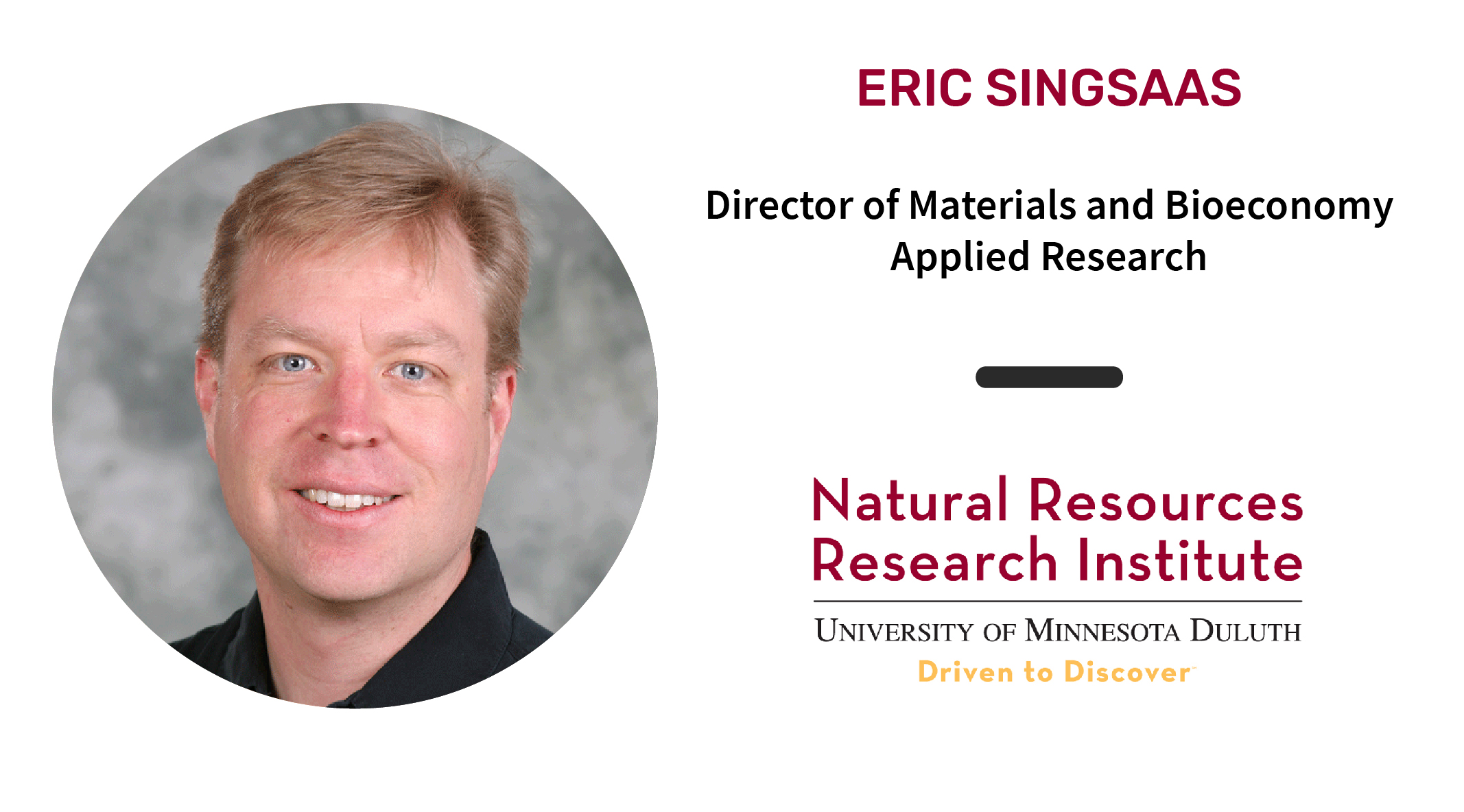Member Profile: Natural Resources Research Institute Aims to Match Minnesota’s Natural Resources with Best Opportunities
August 21, 2020 | Brendan Jordan | Environment

Developing a robust, diverse bioeconomy in Minnesota dovetails with the mission of the University of Minnesota’s Natural Resources Research Institute (NRRI). This blog is part of a new series of profiles about Bioeconomy Coalition of Minnesota members. In learning about the wide-ranging activities of various members, we hope to facilitate networking and continue to build the case for the strategic importance of supporting the development of Minnesota’s bioeconomy.
“When we were presented with the opportunity to participate [in the series], I was immediately on board. Science and technology cannot drive change alone,” says NRRI Director of Materials and Bioeconomy Applied Research Eric Singsaas. “Partnering with the Bioeconomy Coalition has helped NRRI focus its technology programs by leveraging the expertise, relationships, and policy impact of coalition members.”
NRRI was created by the Minnesota legislature in 1983 to “foster the economic development of Minnesota’s natural resources in an environmentally sound manner to promote private sector employment.” Today, NRRI is the university’s non-academic, applied research institute focused on knowledge, stewardship, and emerging opportunities associated with the state’s resources. The institute employs 140 full time researchers and staff; provides key training and experience to students; and partners broadly across industry, agency, academia, and public stakeholders. NRRI operates two industrial-scale sites in Minnesota, one in Duluth and one in Coleraine.
Eric Singsaas says they work to discover the best opportunities and where NRRI can make investments relevant to the Minnesota bioeconomy. He cites the example of groups of farmers that joined forces through cooperatives to build ethanol plants using Minnesota’s abundant corn supplies. “We have a role in broadening beyond the agriculture focus to encompass forestry, biotechnology, and chemical technologies,” he says, looking for new technologies that match Minnesota’s market and environmental needs. “Then pulling those together, with policy being the glue that knits it together.”
Bioeconomy of Minnesota facilitator, the Great Plains Institute, has deep policy experience and engagement with state legislators that complements NRRI’s understanding of the science and technology, Singsaas says. Understanding how the state’s natural resource-based industries have grown and their pain points and successes have been is important background to use when identifying and developing new opportunities.
“With capabilities to take projects from bench top to demonstration scale, NRRI is helping industry de-risk new technology projects,” says Rolf Weberg, NRRI executive director. “We’re helping to attract industry that belongs here, that is rightsized for the resources we have.”
A main goal for the institute is to move beyond a commodity approach and develop higher-value products. Weberg uses the example of a lumber industry commodity—2x4s. “We look for innovative ways to expand the product portfolio and seek higher-value products. For example, if we can make a polymer out of 2×4 production residuals and use mineral byproducts as a filler, we now have a composite, a value-added product in addition to that 2×4.”
NRRI’s facilities allow the institute and its industry and research partners to manufacture sufficient quantities to demonstrate new products, do initial marketing to evaluate market potential, and gather data on the new technology’s impact on energy, water, and the environment.
Reducing carbon emissions and improving the environment are increasingly important for globally competitive industries, Singsaas says. NRRI evaluates waste streams such as electronics, solids from sewage treatment facilities, construction and demolition materials, and paper and sawmill residuals. “In the economy of the future, waste will be minimized,” he says. “The focus is to manage the lifecycle as a competitive advantage.”
Moving from commodities and waste to value-added products doesn’t just happen, Singsaas stresses. “It requires sustained investment in R&D, the right policy scenario, the right incentives, and a deep understanding of the economy of the state. There are great ideas that don’t match the resources that we have, or what people want to buy in this region. This is the other conversation we’re trying to drive with the Bioeconomy Coalition of Minnesota.”
Looking ahead to the potential for the Bioeconomy Coalition, Singsaas says, “I look forward to what we can do together for Minnesota.”
Keep up-to-date on the Bioeconomy Coalition of Minnesota’s work by signing up for our quarterly newsletter.
